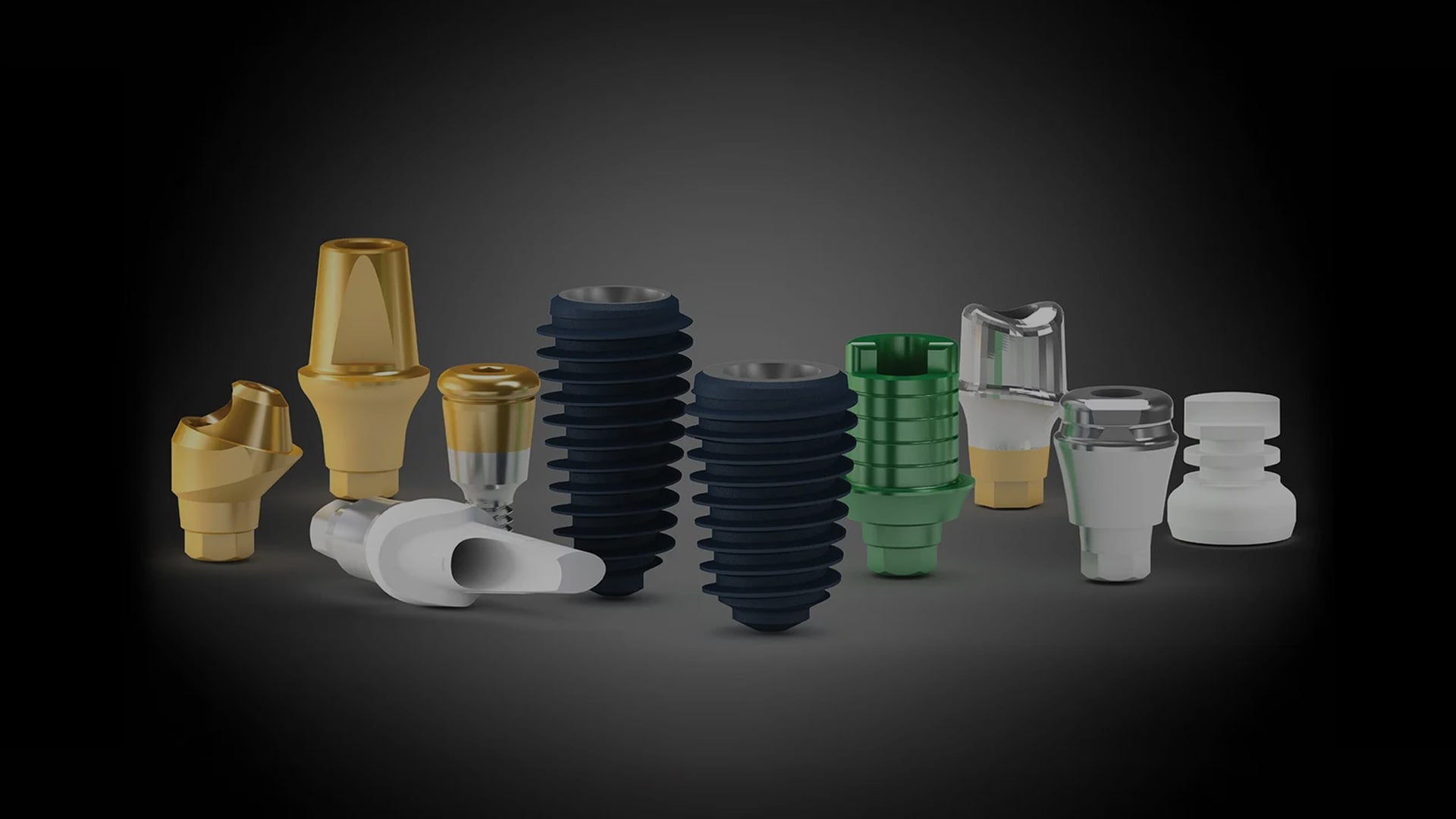

Dental implants are titanium screws that are placed into the jaw bone and represent the root of the missing tooth, thus providing a strong foundation for tooth replacement. Prosthetic dental solutions with dental implants range from single tooth replacement to full mouth rehabilitations. Kamala Dental Specialty Hospital is a well-known centre for dental implant based teeth replacement options. We provide strong biocompatible dental implants with the most advanced designs and concepts. A wide range of world’s best dental implant systems like Megagen, Nobel Biocare, Straumann and an array of cost effective dental implants are practiced at Kamala Dental. This allows the patient to choose the best and most economical option for themselves.


Digitally planned and executed implant placements called guided implant surgeries are performed using three dimensional scans like CBCT, intraoral scanning and special software such as R2GATE and R2WARE which are used to design a surgical stent or guide.
Such surgical guides or stents are used as a template for keyhole flapless implant surgeries which makes the procedure minimally invasive by avoiding trauma to the adjacent tissues. A guided approach also exponentially reduces the time taken for the surgery. With guided surgery the surrounding anatomical structures like the inferior alveolar nerve and the sinus floor can be protected by selecting appropriate fixture lengths.
A three dimensional CBCT scan helps to accurately record the hard tissue architecture and an intraoral scan records the soft tissue architecture. The DICOM files from CBCT and the STL files from intraoral scanning are merged in the R2GATE software and the implant placement is planned. The quality and quantity of bone and soft tissue and its feasibility to encase a dental implant within adequate thickness of bone is assessed in R2GATE. The color coded analysis of the bone morphology enables us to map out an optimal drilling sequence for strong initial stability of the implant, which is called ‘Digital Eye’.
Considering all the parameters, the number of implants, their sizes and their axial positions are planned and the most feasible options to get the maximum anchorage are considered. With this digital planning, a surgical guide is fabricated using a 3D printer. This surgical guide transfers the ideal position of the implant(s) into the patient’s jaw bone.
Sometimes implant placement is difficult, especially in bone deficient scenarios or if the structural integrity of the alveolar ridge is lost. In such cases, it is necessary to replace the lost volume of bone to ensure stability and longevity of the implants. This is best done by using your own bone and/or artificial bone combined with growth modifiers like Platelet Rich Fibrin (PRF). Such bioengineering techniques are commonly used at Kamala Dental Specialty Hospital to ensure high success rates for the implants placed.

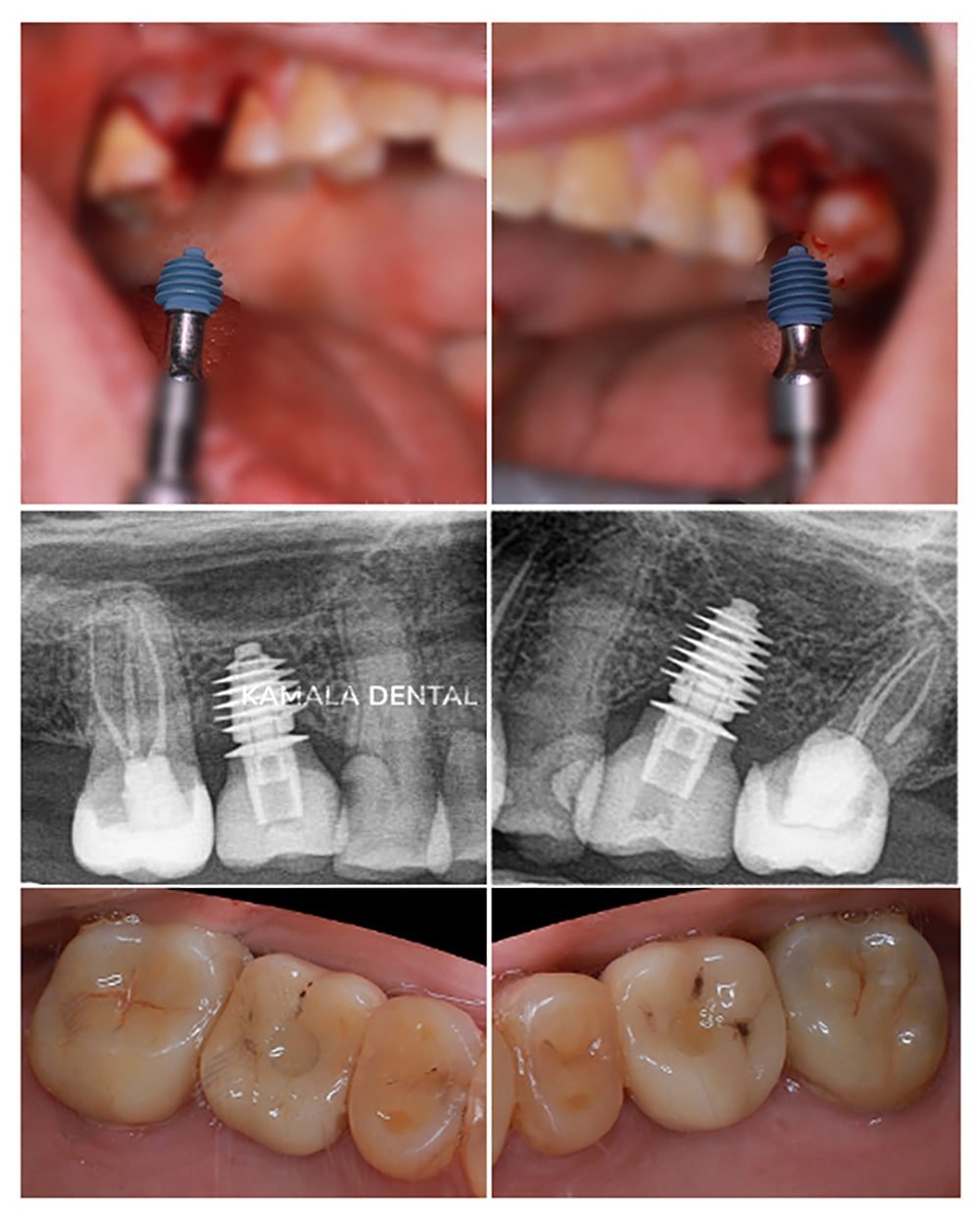
Implant companies like MegaGen have come up with innovative ideas offering short and stout implants that are ideal for placement in areas with deficient bone height, especially in the upper and lower posterior areas of the jaw. The employment of these implants can avoid the requirement of extensive grafting procedures.
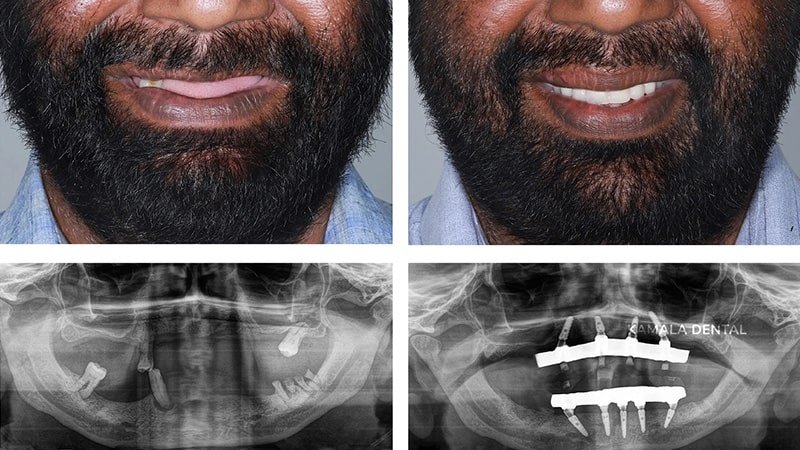
This is offered as a solution for completely toothless conditions in one or both of the jaws. Four implants are placed in the anterior region A framework which holds the entire set of prosthetic teeth is fixed on the implants, thus providing full mouth rehabilitation. Due to the concept of all the teeth being supported on four implants, it is known as “All on Four”.
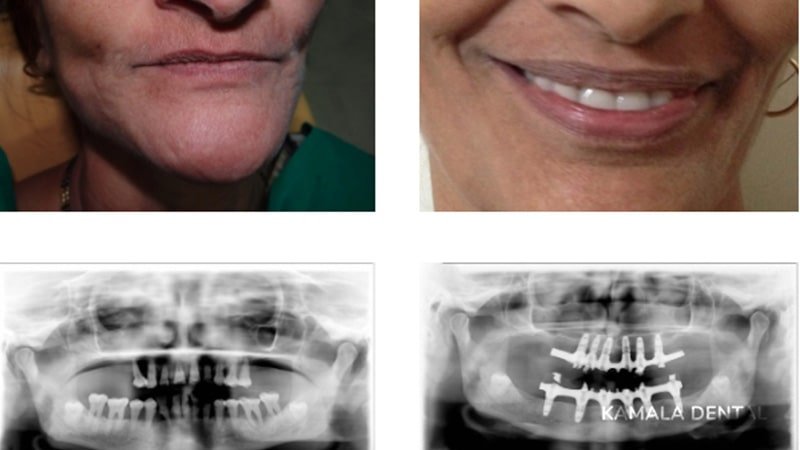
When there is adequate bone in the anterior and posterior segments of the jaw, then it is assuredly better to have six implants in each jaw placed at a straight angle which provide support for a hybrid denture.

Zygomatic implants are done when there is minimal or no residual bone volume in the upper jaw. The facial bone adjacent to the upper jaw bone is taken as an anchor to provide support for the denture. Two straight implants in the anterior region and two tilted long implants arising from the zygomatic bone provide adequate support to hold the hybrid prostheses in severely resorbed scenarios of the upper jaw bone.

When there is less than 2mm width of bone left in the anterior and posterior segments of the jaw, then two implants are anchored in each of the zygomatic bones. This provides a better foundation for severely resorbed jaws as a fixed option.
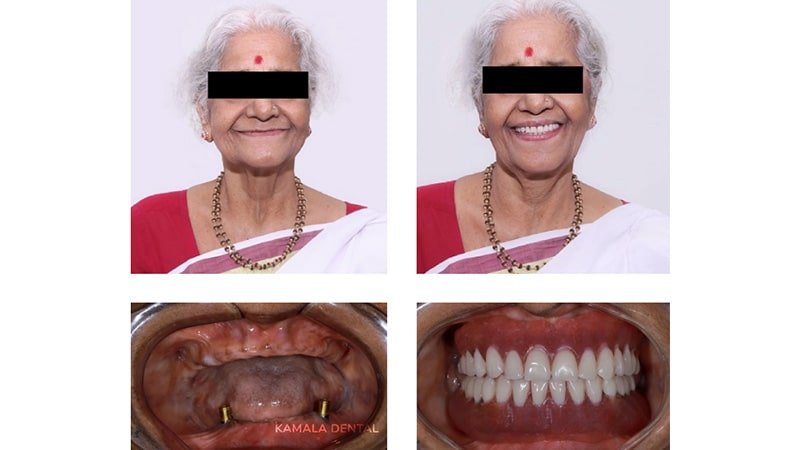
Overdentures are a less expensive, semi-fixed alternative for implant supported hybrid dentures. Either two or four implants with ball abutments or zest anchors are preferred placed. This gives excellent retention and stability for full denture prostheses.